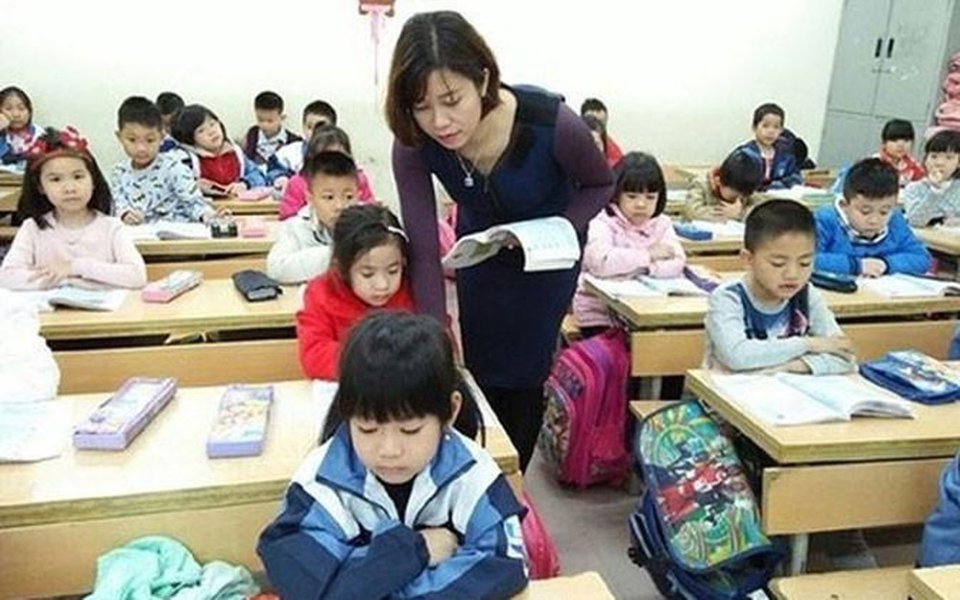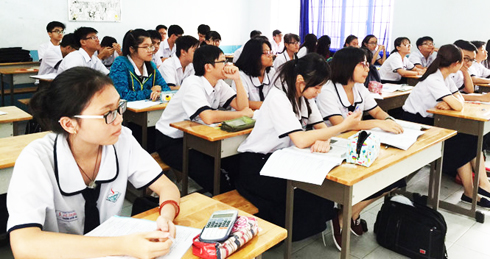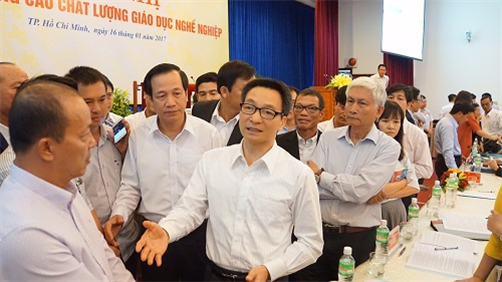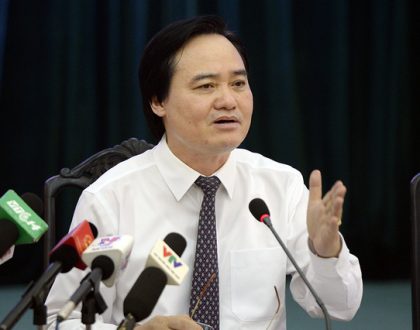Primary school teachers who meet standards have the lowest salary coefficient of 2.34. This is one of the notable contents in the Draft Circular stipulating codes, standards for professional titles, and the appointment and ranking of salaries for public primary school teachers currently being solicited for public input online.

Coming soon, certified primary school teachers will have the lowest salary coefficient of 2.34 - Illustrative image
To be specific, according to this Draft, the upcoming professional titles for primary school teachers include:
- Primary School Teacher Grade III – (Code provided by the Ministry of Home Affairs);
- Primary School Teacher Grade II – (Code provided by the Ministry of Home Affairs);
- Primary School Teacher Grade I – (Code provided by the Ministry of Home Affairs).
- For teachers who do not meet the standard training qualifications as per point b, clause 1, Article 72 of the Law on Education 2019, including teachers undergoing a pathway to upgrade their qualifications or those not required to upgrade their qualifications, they will hold the professional title of Primary School Teacher Grade IV – (Code provided by the Ministry of Home Affairs). (Currently, according to Joint Circular 21, the professional title of primary school teachers includes only three grades: Grade IV, Grade III, and Grade II, where Grade IV comprises teachers with a diploma in primary education or appropriate pedagogical specializations and above).
The Draft guides the salary classification for the corresponding professional titles of primary school teachers as follows:
- The professional title of Primary School Teacher Grade III is applied with the salary coefficient of public employees type A1 (from salary coefficient 2.34 to salary coefficient 4.98);
- The professional title of Primary School Teacher Grade II is applied with the salary coefficient of public employees type A2, group A2.2 (from salary coefficient 4.00 to salary coefficient 6.38);
- The professional title of Primary School Teacher Grade I is applied with the salary coefficient of public employees type A2, group A2.1 (from salary coefficient 4.40 to salary coefficient 6.78);
- The professional title of Primary School Teacher Grade IV is applied with the salary coefficient of public employees type B (coefficient from 1.86 to 4.06) for primary school teachers with a secondary education diploma, and the salary coefficient of public employees type A0 (coefficient from 2.10 to 4.89) for primary school teachers with a college diploma.
Thus, it can be seen, when this Draft is approved, those teachers who meet the new standard training qualifications according to the Law on Education 2019 (i.e., have a university degree in teaching or an appropriate university degree for the subject being taught accompanied by a teaching certificate for primary school teachers and above) will be applied with the lowest salary coefficient of 2.34 for the professional title of Primary School Teacher Grade III, the lowest of 4.00 for Grade II, and the lowest of 4.40 for Grade I.
For teachers who do not meet the new standard training qualifications under the Law on Education 2019, specifically those who have not achieved a university degree, the lowest applied salary coefficient will be 1.86 for primary school teachers with a secondary education diploma, and 2.10 for those with a college diploma.
Note:
- In case teachers are recruited, have completed probation as per regulations, and currently hold a salary coefficient of 1.86, 2.06, and 2.26, and now meet the requirements to be appointed as Primary School Teacher Grade III as per point a, clause 1, Article 8 of this Circular, they will be classified at salary coefficient 2.34 for public employee type A1, with the next salary increment timeline being 03 (three) years for teachers currently holding a salary coefficient of 1.86, and 02 years for teachers holding 2.06;
- In case teachers meet the standards for appointment to the professional title of Primary School Teacher Grade II or Grade I as per point b, point c, clause 1, Article 8 of this Circular, but the current salary coefficient is lower than the starting salary coefficient of the respective grade, they will still be appointed to the grade but without salary adjustment, continuing to enjoy their current salary coefficient and scale until reaching the equivalent of the starting salary coefficient for the grade, at which point they will be transferred to the salary scale of the grade.
 Article table of contents
Article table of contents








